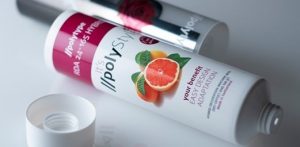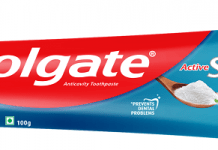
New materials and technology bring innovative sustainable packaging solutions to the market. In lamitubes, new laminates and techniques replace older materials and formats, adding several benefits to the traditional ease of use, portability, and convenience of lamitubes. Lamitube consumption is rising in India. It’s increasing share of packaging in pharma, oral care, food, chemical, and cosmetic industries across the globe presents opportunities for consumer product companies to increase their shelf impact, customer loyalty, and exports.
Wifag-Polytype’s webinar on 10 July attracted many industry participants to look at some of the upcoming market trends and the new opportunities in tube packaging. Called ‘Squeeze Open a New Business Opportunity,’ the event covered the entire spectrum of tube manufacturing right global and Indian scenarios to the materials and manufacturing processes with a live online demonstration from the company’s Kombis factory in Bulgaria in Europe.
Since tube packaging is the fastest-growing segment in the packaging industry, technology, and developments in the field of tubes were also part of the discussion during the webinar.
Better quality of life through better packaging
According to Wifag Polytype India director Praveen Bhatia, the Indian lamitube market has enormous potential. While citing the Chinese and Indian beauty and cosmetic market data, he said that the per capita consumption of cosmetic products is far high in China. Suggesting that India is also going in the direction of higher cosmetics consumption due to the rising disposable incomes, urbanization and the growth of organized retail, he said that these factors drive the increased demand for innovative and attractive packaging concepts.

He further added, “Herbal products are strengthening the plastic tube demand in India. Companies like Patanjali Ayurveda and Dabur are planning to launch variants in Dant Kranti, Babool, and others. Moreover, during the Covid-19 pandemic, many companies have launched hand sanitizers in tubes.” According to him, foreign investors are also looking for tube packaging companies in India. He cited the example of Blackstone recently investing in Mumbai-based global tube-packaging company Essel Propack.

To tube or not to tube
Whenever we intend to package any product, a critical choice must be made between the type of packaging (bottle, jar, or tube). Leading packaging developer and consultant Deepak Manchanda, expressed his views on how the choice of the tube as a packaging format works better than other forms of packaging.
While explaining some of the worldwide trends, Manchanda observed that brand owners are moving away from rigid packaging in favor of tubes for beauty products, personal care, and homecare in particular. “Many people use the rigid container for packaging because it has a variety of shapes and sizes. On the other hand, the collapsible tubes are available only in a limited range of boring cylindrical shapes that do little to add to a brand’s personality. Still, they possess other advantages to suit a brand’s character.” He nevertheless showed some innovative concepts that give designers the opportunity of creating extra visual features to liven up the shelf impact of lamitubes.
He pointed out that collapsible aluminum tubes are being replaced by multilayer flexible laminate tubes, which allow better print decoration and hand feel. “Seamless extruded PE made possible the ‘spring back’ feature. This keeps the tubes looking fresh and shelf worthy, especially with the use of full diameter standup caps,” he added.
The distinction between PE tubes and lamitubes has begun to blur with the arrival of EVOH barrier lamitubes, which offer both spring-back and transparency features. Manchanda mentioned the advances in modern print decoration techniques whereby photo-realistic print can now offer creative opportunities. He added, “Digital printing on tubes, which is already a commercial possibility, will open up a whole new world of short-run capability. Designs will be possible to change according to seasons without expensive prepress.”
Manchanda believes the opportunity for tubes to gain market share by creative product innovation and seizing their business opportunity appears to be immense. Tube packaging can surely be a pipeline to profits.
Lamitubes — global market and trends
According to Alain Berset, chief executive officer of Wifag Polytype, the Wifag group works on a philosophy of global thinking and acts locally to understand the needs of their customers. Berset explained the market trends of tube packaging (plastic tubes, aluminum barrier laminate, plastic barrier laminate, and aluminum tubes) in European and the US markets across sectors with the market share of cosmetic (50%), pharma (20%), toothpaste (20%), food (8%) and household industry (5%). He stated, “The tube packaging market is very attractive, as we see growth and opportunities everywhere. If you are an Indian manufacturer, there are many opportunities to export to these markets.”

According to MK Banerjee, director Essel Propak, laminated tubes are gaining popularity over plastic extruded tubes. While emphasizing the sustainability and recyclability of the packaging structures, he said, “The transition from multilayer multi-polymer, foil-based laminates to single-family polymer-based laminate tubes are need of the day.”
He sees all family and single based polymer structures emerging in oral care, food, and cosmetics. “Bureau of Indian Standards has permitted aluminum foil-based structures for pharma at the moment, but for any other sectors, the foil-based structures will be restricted.” Banerjee also explained the Inviseam technology that is nowadays becoming popular in cosmetics.
The webinar concluded with the virtual tour or online presentation of the lamitube production line at the Kombis factory in Bulgaria by Miroslav Hinkov, managing director of Kombis and his on-site colleague.








